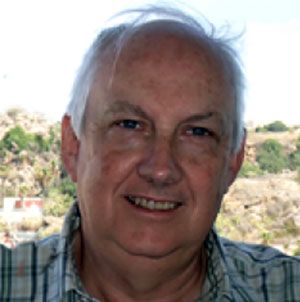Barents Blog 3: The work has begun.
, 5 August 2013
After waiting for 36 hours we finally left port and headed north to the Barents Sea. The sea is incredibly calm [1] and now we are here it is also a strange shade of pale blue, not at all what I expected. All the time we are accompanied by fulmars, sitting in the water on our lee side [2] .
We have started at the northerly end of our transect around 72.5°N. At each station we carry out a video survey of the area using a trifid like camera array called the CAMPOD [3] . It is seen here being brought back into the hangar after its trip just above the sea bed. Inside the control room [4] the operators log all biological and geological features visible on the video displays. Sitting on the right Gjertrude controls the camera while Geno enters data into the log, behind on the computer is Valerie, one of the geologists, who notes the sediment types and out of sight but to the left is the winch-man who makes sure the array does not crash into the sea floor! The sea bed is rather featureless here, an expanse of mud with few animals visible. Too much of this mud was about to appear on deck.
One of the sampling gears is a 3m Beam Trawl, designed to skim over the surface of the sea floor catching the larger "megafauna" including fish. As you can see from the discoloured sea, swollen net and mud on deck it acted more like a dredge than a trawl [5, 6] . The 'mud-larks' (Torjuis, Gjertrude & Anne Helene) get stuck in and are soon satisfied with their work [7] . Cruise leader Lys accounts that none is missing and Geno contemplates having to sort the animals from the mud [8] .
I quite like mud. It usually results in bivalves and I was not disappointed. The large Arctic cockle [9] is the most obvious but most common were, sorry for Latin names, Bathyarca glacialis [10] and Astarte sulcata [11] . Among the other ten, I got two of the species I had come for, over fifty specimens of Mendicula and twenty of Thyasira. You can look at my web site if you want to see more http://naturalhistory.museumwales.ac.uk/britishbivalves/. Perhaps the most appealing are these cushion stars [12] while the sponge is positively weird [13] . The cushion stars are apparently the favoured food of the king crab [14] . The giant was introduced into the region from the north Pacific by Russian fishermen who hoped to make their fortunes but it is turning into an environmental disaster as these voracious predators destroy everything in their advance down the coast of Norway.














